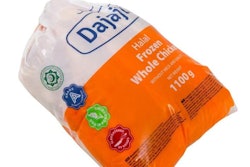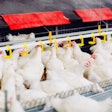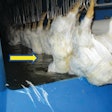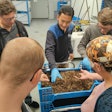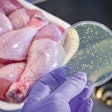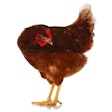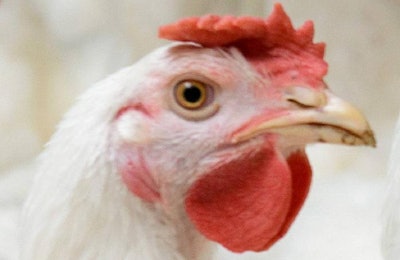
Slower-growing broiler birds could bring a far more significant environmental and economic impact than previously estimated, according to a new study.
As part of the 2019 Midwest Poultry Federation Convention in Minneapolis, Dr. Anthony Pescatore, associate chair and extension professor at the University of Kentucky’s College of Agriculture, Food and Environment, shared the results of his work studying the performance of a conventional broiler bird and a slower growing bird. Pescatore spoke on March 12.
The study compared the performance of a conventional, white Cornish Cross breed and a slower growing, brown Red Ranger bird as well as a number of heritage breeds. The time it took the birds to grow to market weight, as well as other factors like feed conversion ratio and final without giblet weight were also monitored.
After analyzing the performance figures, the researchers estimated how many real world resources it would take to produce the same amount of meat from both the Cornish Cross and Red Ranger.
According to the study, the following increases would be needed to produce 1 million pounds of whole carcass without giblets:
- 9 percent more birds.
- 45 percent more time in the houses.
- 7 percent more houses.
- 28 percent more feed.
- 27 percent more trucks to deliver more feed.
- 9 percent more trucks to take birds to processing plant.
- 9 percent more water for processing.
- 36 percent more offal.
However, the vast majority of chicken products sold and consumed in the U.S. are not whole birds. Consumers prefer breast meat. So, the study estimated how many resources would be needed to produce 1 million pounds of breast meat.
The following increases would be needed:
- 68 percent more birds
- 45 percent longer in the house
- 66 percent more houses for the extra birds
- 97 percent more feed
- 100 percent more trucks to deliver feed.
- 68 percent more trucks to take birds to the processing plant.
- 68 percent more processing water.
The production of just breast meat would also increase in more legs and wings, 73 percent more legs, about 100 percent more wings and 95 percent more offal.
“We’ve got to produce a lot of dog food,” Pescatore said.
The study concluded that switching U.S. broiler production to a slower growing breed will impact the economics and sustainability of the broiler industry and ultimately have a negative impact on the environment.




